699 Search Results for communication book
January 13, 2014
by Robin Parker -
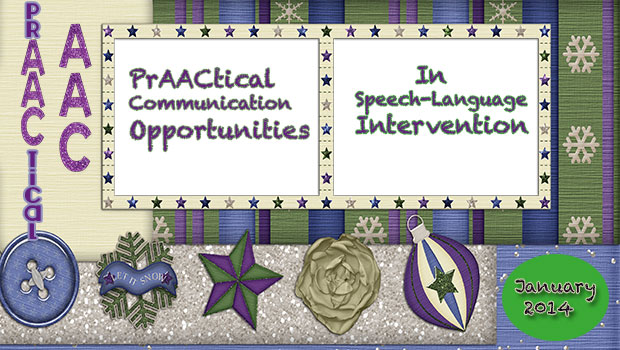
Planning for communication opportunities in every aspect of speech-language therapy helps ensure productive use of time and effort for both clinician and learner. It is not enough to talk to a student, it is not enough to provide fun activities without lots of opportunity for active participation and more specifically communication initiation. Another word for communication initiation/opportunities is communication temptations. Communication temptations are structured situations designed to entice a variety of specific communication functions or semantic relations (Wetherby, 1988). There needs to be lots of times where there is targeted modeling and then a specific, obvious reason for the learner to be the initiator of communication. A temptation to communicate. Take a look at this sample therapy session for frequent and multiple communication opportunities. Please let us know a favorite or creative communication opportunity that you use. PrAACtical Considerations Meaningful AAC Goals– All quality speech-language intervention sessions start with meaningful... [Read More...]
November 22, 2013
by Carole Zangari -
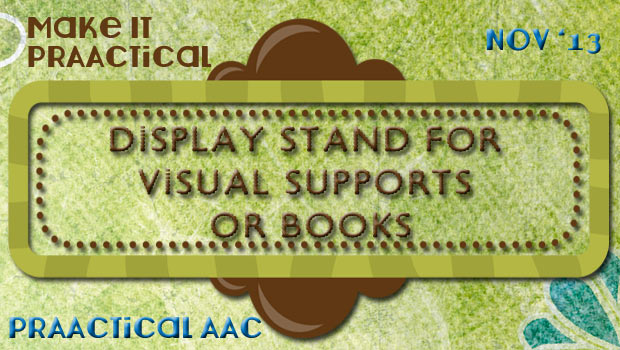
In an earlier post, we shared a wonderful video on making a portable stand for a communication book. Today, we look at a different approach to book stands, which would be great for the reading material or visual supports that the communicator needs to see. We love that it is lightweight, easy to transport and store, and inexpensive to make. Hats off to the wonderful team at AT in New Hampshire for this terrific video. The direct link is: https://www.youtube.com/watch?v=1EeX7bIKiEU.
September 28, 2013
by Robin Parker -
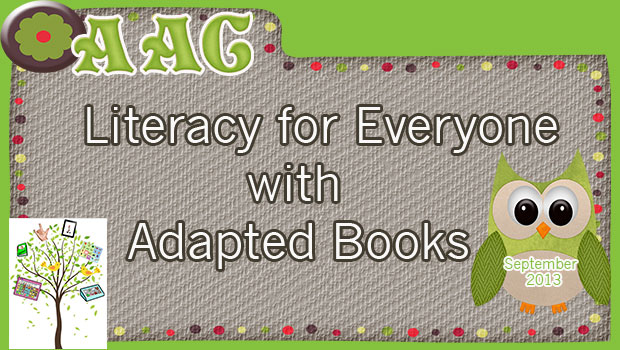
To integrate reading and writing into communication & language learning we need to have lots of books that are easily accessible. Books should be accessible physically as well as through content and interest. This holds true for ALL learners even those that don’t like books but do like…… wheels. We have made literacy accessible for a young girl who only liked elevators, and a boy who only liked balls, and a young adult who liked Barney books but not much else. It holds true for ALL disabilities, and ALL levels of reading and writing. For our final September Literacy Strategy of the Month, we wanted to share the abundance of resources for making adapted books. Because when we have great adapted books, literacy is more accessible. Check out these awesome resources for making your own adapted books and for printing out already created adapted books and lessons. We love early... [Read More...]
July 24, 2013
by Carole Zangari -
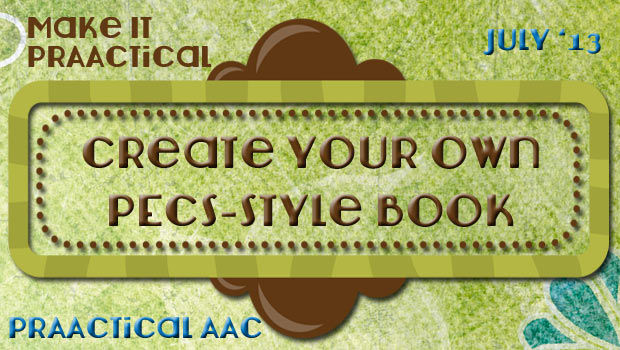
There’s nothing that says ‘exciting’ like seeing a little person have their first successful experience with AAC. I had just that kind of experience recently and had some fun with a little guy who went from requesting by grabbing to requesting by handing me a picture symbol in about 15 minutes. His parents are interested in using the Picture Exchange Communication System® (PECS®) and that’s probably a good next step. While looking for online information to send them, I can across this wonderful tutorial on how to make your own book in the PECS® style from a 3-ring binder. Hope this excellent post from Educate Autism comes in handy. Picture Exchange Communication System® and PECS® are registered trademarks of Pyramid Educational Consultants, Inc.
July 13, 2013
by Robin Parker -
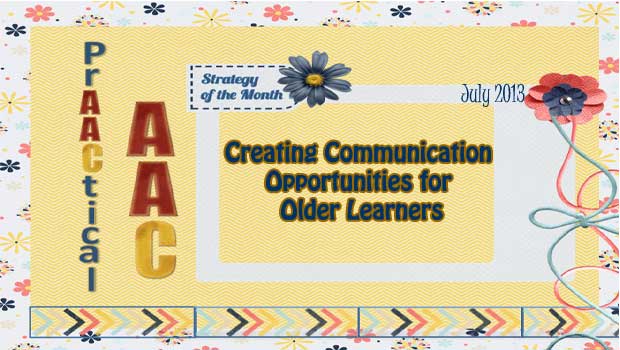
The Strategy of the Month involves AAC and the ‘older learner’. The ‘older learner’ involves a range of ages (We are ‘older learners’ for way longer than we are children) as well as a wide range of functioning levels. Even with this variation though, we know that ALL older learners can learn. There are challenges with ‘older learners’ that need to be addressed in order to facilitate spontaneous and generative communication and language. The challenges may result from years and years of going to intervention (some of it effective, some not), from perceived failure by the learner and/or the professionals, or may even just be related to that ‘teenager or adult’ independent streak. These challenges can definitely be overcome in order to help develop a functional and robust communication system for ALL learners. Just remember respect the learner as a competent teenager or adult (e.g., think what a typical language... [Read More...]
June 28, 2013
by Carole Zangari -
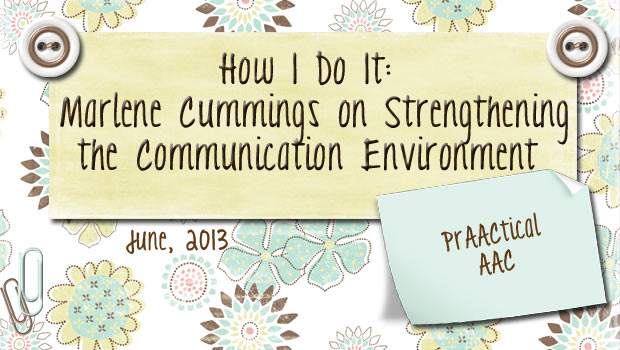
Marlene Cummings is back to share some thoughts on creating communication-friendly environments. As an AAC consultant to the Oakland Schools, Marlene gets to support AAC implementation in a variety of classrooms with all types of learners. You can read her earlier posts here and here. ::::::::::::::::::::::::::::::::::::::::::::::::::::::::::::::::::::::::::::::::::::::::::::::::::::::::::::::::::::::::::::::::::::::::::::::::::::::::: 5 Things to Consider in the “Communication Environment” The first thing we want to ask: Is language being represented visibly? We in AAC are often known by our “stuff”. Because we need to represent language visibly and love technology, we typically have a lot of “stuff”. I, for one, currently have a large storage unit holding 30+ years of “stuff” waiting to be distributed to all my new teams since I am no longer in the classroom. Let’s start by looking around our instructional environment. It is our intention to model the use of language being represented visibly and to provide the vocabulary and opportunities for... [Read More...]
June 22, 2013
by Robin Parker -
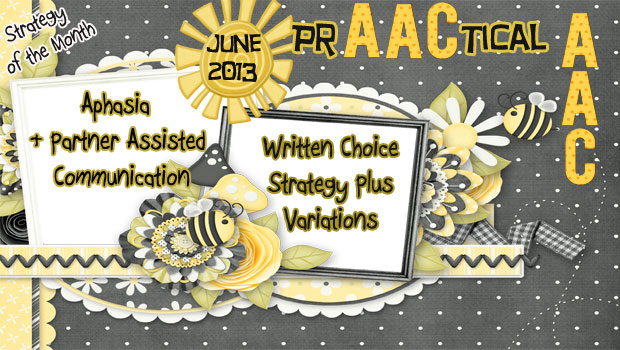
This month, we have enjoyed writing about communication strategies for aphasia. Partner supported communication is the platform for many of the effective techniques we use to help people with aphasia initiate, maintain, or terminate communication and conversation. We have talked about assessment strategies, communication books, and alphabet & topic supplementation. Now it is time to discuss the written choice strategy. The written choice strategy is fairly easy to implement, can look natural, and can result in seamless detailed conversation. Written choices are provided in the context of conversation and are displayed in an organized manner. What is It? The written choice strategy has the partner/facilitator generating written key-word choices that relate to the conversational topic. The written choices can be paired with text, pictures, drawings, symbols, and natural speech. The partner/facilitator writes possible answers to conversational questions in list form. The conversation is extended as continued written choices are offered... [Read More...]
May 18, 2013
by Carole Zangari -
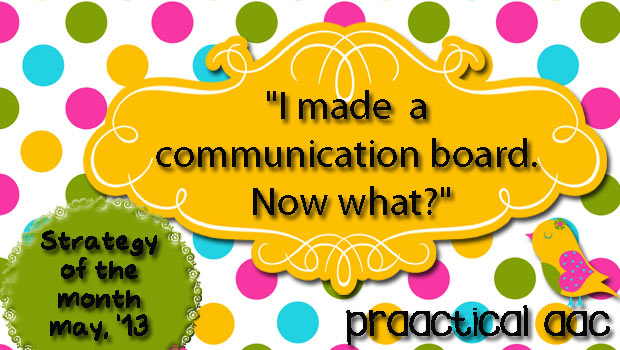
Earlier this month, we shared some ideas for making communication boards using color coding and also for creating boards geared to different communicative purposes. Making the communication board according to some basic principles is a good thing, of course, and it takes a decent amount of thought and planning. Even more important, though, is developing an intervention plan so that the augmentative communicator learns how to use the board effectively. Here are some of our thoughts on how to teach someone to use a new communication board. Model It We’ve talked about aided language input so many times that I’m almost embarrassed to mention it. Almost. The truth is, it is a ‘must do’ strategy when we’re first introducing a communication board, book, SGD, or AAC app. Incidental learning is important for just about all of the people with whom we work. It is never the only strategy we use,... [Read More...]
May 11, 2013
by Robin Parker -
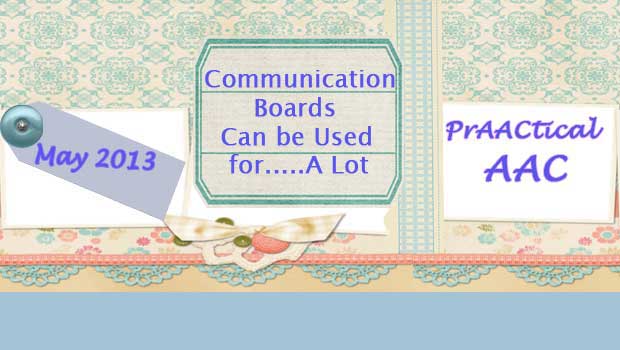
When we think of AAC and communication boards or displays, we often think of comprehensive core and fringe words. We think of a board that will represent the most possible communication functions, vocabulary, and generative language. However, there are many other ways to create and use communication boards. There are many other ways because there are many reasons we communicate and sometimes it is best to create a communication board that focuses on a specific communication need. AAC is not one thing but a system of communication supports, and for most AAC users, there should be a multitude of communication options that will aid in robust communication and language needs. All AAC users should have a comprehensive individual communication display whether low tech (communication book) or high-tech (AAC device or App). But…. many AAC users will also benefit from communication boards that support a specific communication purpose. The reason for... [Read More...]
May 4, 2013
by Carole Zangari -
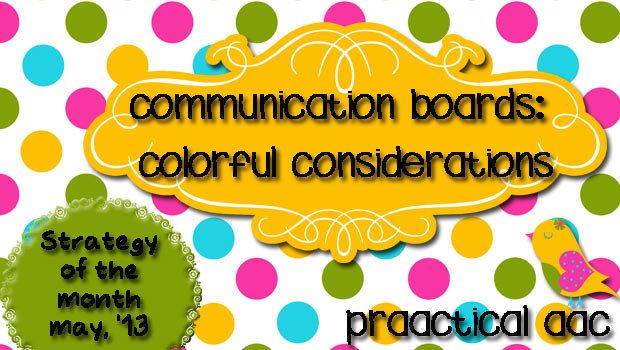
We love AAC technology and are deeply grateful for the options that are available to people with significant communication difficulties. We’re strong supporters of voice output systems and the autonomy they give to the children and adults with whom we work. On the other hand, we have great respect and much fondness for the “no tech” communication aids and visual supports. As a student clinician, I made my first conversation book for Sherri, a young lady who had learned Bliss at school but had no communication materials in the institution where she was living. In my days as a clinical fellow, I got ratted out by Davey, a client who used his 100-location Bliss board to tell the supervisor that I gave out seconds on coffee even though the rule was one cup per person. (I knew I should never have taught him interjections!) There’s no doubt – communication boards... [Read More...]









